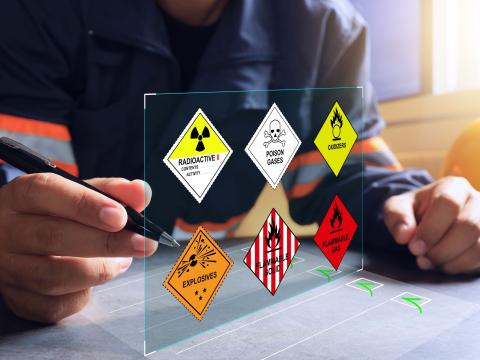Three D’s Among Lessons Learned in Ukraine-Russia War
As new developments arise out of the war between Ukraine and Russia, U.S. defense officials are working to observe and record the lessons learned from the battle and incorporate the necessary adjustments into their own operations. More specifically, one U.S. Army troop was in Ukraine, and during his time there, he made note of three areas that are playing a crucial role in the fight. Those spaces are defense, data and the defense industrial base, also known as the three “D’s,” Maj. Gen. Keith Phillips, special assistant to the director of the Army Staff, Office of the Chief of Staff of the Army, and former senior defense official and defense attaché, U.S. Defense Attaché Office in Ukraine, announced during a keynote address at the 2025 Intelligence & National Security Summit in National Harbor, Maryland.
Firstly, the Ukrainian military's ability to defend the homeland has been noteworthy and shocking in a way, according to Phillips. Throughout the war, officials have raised questions about how Ukraine can protect its people and country, along with how its military can integrate air and missile defense. And so far, they have had the ability to answer these questions in a successful manner, which has been exceptional, according to Phillips.
“[It’s an] absolutely remarkable story,” Phillips said. “[They had] zero control of the airspace in 2022, essentially. And now, despite significant kinetic activity almost every single evening [and] records being broken overnight, they’re doing a pretty remarkable job.”
Furthermore, Phillips gave a lot of credit to U.S. assistance.
[It’s an] absolutely remarkable story. Ukraine had zero control of the airspace in 2022, essentially. And now, despite significant kinetic activity almost every single evening [and] records being broken overnight, they’re doing a pretty remarkable job.
Secondly, the Ukrainian military’s ability to take advantage of data while also guarding it from threats is another facet of the war that U.S. leaders can learn from and integrate into their operations. U.S. military officials acknowledge that data is a weapon on today’s battlefield, and the race to data superiority could lead to warfighting superiority. This is because additional and more advanced data can lead to better equipment and capabilities, especially in the realm of artificial intelligence and drones. Phillips raised questions about how the U.S. can address this necessity.
“How do Ukrainians use that?” Phillips asked. “How do they protect it? How do they exploit it? How can we learn from how they use it, how they exploit it, how they protect it? From some perspectives, you might look at it and say they receive a lot of risk, but they also don’t have the luxury, given just how pressing the threat is.”
Finally, Ukraine’s defense industrial base is another area that the U.S. needs to bolster and ensure its readiness for the next battle. Most of Ukraine’s defense industrial base was in the eastern part of the country, and officials began to move it westward starting in 2014, according to Phillips. Because of this, the Ukrainian military has access to its defense industrial base, another crucial facet of its ability to fight in the war.
Additionally, assistance in the data and defense industrial base is not going to come from the government, Phillips predicted.
The 2025 Intelligence & National Security Summit is organized by AFCEA International and INSA. SIGNAL Media is the official media of AFCEA International.




Comments